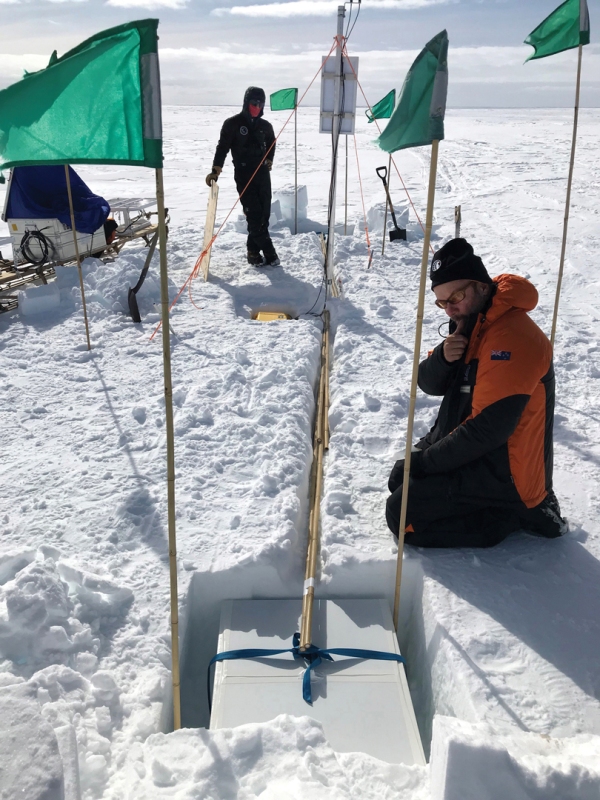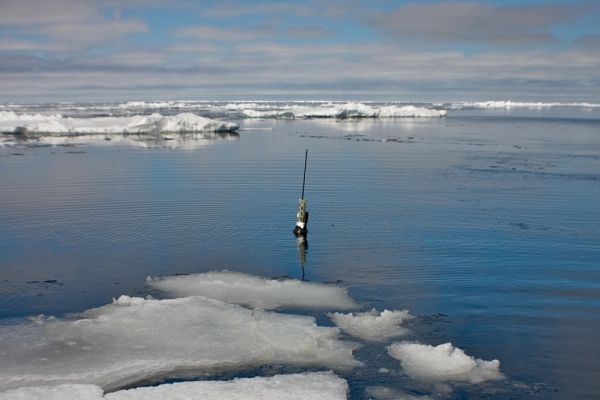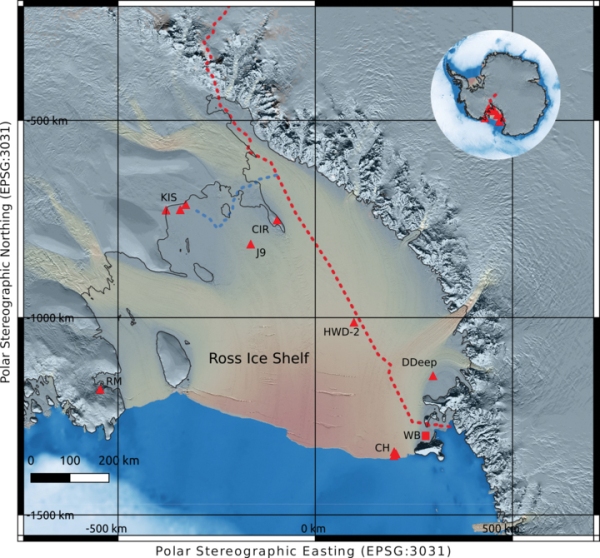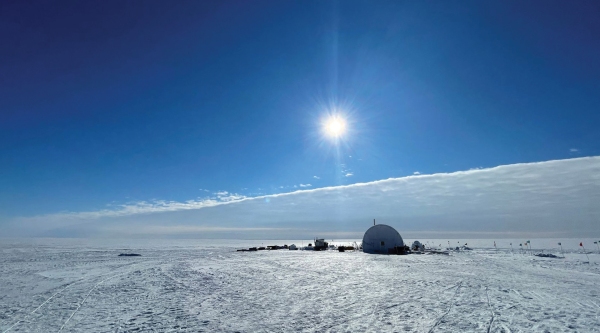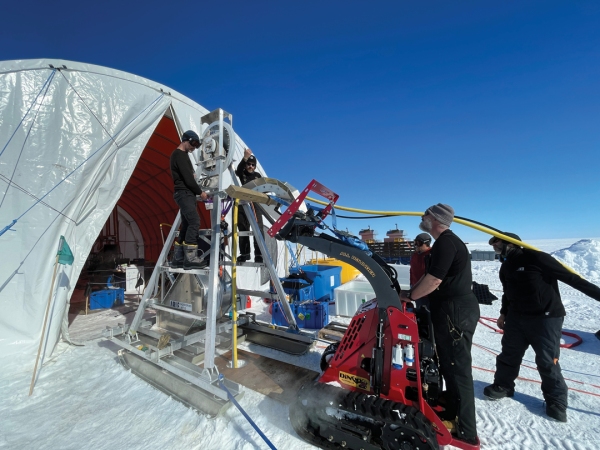Coldest, driest, windiest, iciest, highest, most southerly – Antarctica is a continent of extremes.
It’s bigger than Europe and has ice covering 98% of its land, at a hefty average thickness of nearly 2km. Holding 90% of the world’s ice and 80% of its fresh water, Antarctica has a profound effect on the planet’s oceans and climate.
Antarctica is also remarkable for its massive ice shelves, giant sheets that flow out from the continent and float on the surrounding sea. The Ross Ice Shelf – the world’s largest – lies above the Ross Sea, almost due south of New Zealand.
It’s little surprise, then, to find three NIWA scientists, each working on Antarctic Science Platform research projects focused on trying to piece together the changes in the Ross Sea and the ice shelf above.
Dr Denise Fernandez’s research takes place where the Ross Sea meets the outer edges of the ice shelf, where Antarctica connects to the Southern Ocean and the rest of our planet beyond. She studies the interactions between the ocean, ice and atmosphere.
“We want to understand the mechanics of the Ross Sea and how it might change under different climate scenarios,” she explains.
Because ice shelves float, there is a continuous circulation of water underneath that comes in and out of the open ocean. You might presume that this is all cold, but some columns of water are comparatively warm and can cause ice shelves to melt from below. There is also salt present in the environment, which can have impacts on the ice. It’s these processes that Fernandez and her international colleagues are trying to figure out.
“We’re developing models to analyse the heat, salt and energetics of this water. How warm and cold is it? Is more warm water coming in? How will this affect melting? Changes have big implications for sea-level rise and ocean circulations around the world.”
Fernandez and her team use Argo floats, robotic instruments that collect data by drifting with the ocean currents. The floats move through the water column collecting information at different depths. Every 10 days they return to the surface and transmit their data to passing satellites. The floats can stay in the ocean for several years.
After analysing the Argo float information, they found that the coldest parts of the Ross Sea are near the surface, but there is an inflow of warm water below 2,000m. There is also a spike in salinity in this deeper region.
“The evidence from the Argo floats helps us to build simulations for various potential future climates, so we can see the implications of changing currents, temperatures and salinity on this delicate system,” she says.
They were also able to look at seasonal changes by comparing data from different years, as well as analysing the water’s oxygen profile, which can point to life and biological ecosystems. Global trends show that the oceans are losing oxygen, but we don’t yet have full data for much of Antarctica.
"It’s like a puzzle we’re slowly building. We have the big picture, but we need to put the smaller pieces together.”
Dr Craig Stewart, along with his colleagues from the University of Canterbury and the British Antarctic Survey, work on the edges of the Ross Ice Shelf itself. They are looking at what happens when the shelves lose mass.
Ice shelves do an important job: they apply backwards pressure on the glaciers that feed them, acting as “brakes”. But when they disintegrate, more and more glacial ice slides into the ocean.
“We care about this because the loss of land-based ice is now the largest single contribution to sea-level rise. While some ice shelves are melting rapidly, others such as the Ross Ice Shelf are close to equilibrium. Understanding these differences is key to predicting how the ice sheet will evolve in the future.” says Stewart.
Ice shelves are also more sensitive to melting in some regions than others. Computer simulations have shown that removing just 1m of ice from the base of the shelf near Ross Island can affect flow rates across the shelf, showing just how connected and sensitive the system is.
To investigate melt rates in this sensitive region of the world’s largest ice shelf, the team are using 12 specially designed radar units. These ApRES instruments are like aircraft landing radar, sending a pulse of radiation down through the ice which bounces back off the bottom of the shelf. You can gauge the thickness of the ice by the reflection time.
Buried on the shelf, the ApRES instruments will transmit data about the ice’s thickness every hour for over a year, giving the team a real-time map of melting from all 12 sites.
By looking at this information, along with satellite data, Stewart has already observed that rapid melting is occurring near the ice front and open water areas.
“This is where wind blows the sea ice away from the permanent ice shelf, which allows sun to get in and heat it in the summer. This has a more local and immediate impact than the heat coming from the warm deep-ocean currents that Denise is studying.
“The process of ice shelf melting is very important for the mass balance of Antarctica. Thankfully, the Ross Ice Shelf is melting much slower than other locations, so by understanding the processes behind it, we can improve forecasts of the future of the ice sheet.”
The final team, including NIWA marine physicist Professor Craig Stevens, were based near the Kamb Ice Stream, more than 500km south east across the ice, where the shelf joins the mainland. Stevens is part of a multi-disciplinary research partnership involving scientists from GNS Science and Victoria, Otago and Auckland universities.
Like a Sherlock Holmes novel, this group were following an intriguing set of clues that led to some landmark discoveries.
Back in New Zealand, Steven’s colleague, Huw Horgan, Associate Professor of the Antarctic Research Centre at Victoria University of Wellington, was studying satellite imagery showing a location where the ice shelf starts to flow out from the continent, when something caught his eye.
“He could see a groove in the ice,” says Stevens. “We suspected it might be an under-ice estuary.”
Researchers have long suspected that there’s a network of hidden freshwater lakes and rivers flowing underneath the Antarctic ice sheets. But these hidden rivers have yet to be directly surveyed.
Two years later, Stevens and the team are gathered on the Antarctic continent looking for that “groove”. But finding it was harder than they thought.
“It looked dramatic from the satellite imagery, but when you get there and you’re looking around you’re thinking: ‘Where’s the groove?’ But then we find this tiny, gentle slope and guessed we’d got the right spot.”
Using a hot water hose, they melted through half a kilometre of ice underneath the small depression, and with laser-like precision, drilled straight into the meltwater river below.
Here, they observed things that had never been seen before.
“There was a huge element of discovery for us. The first surprise was that the meltwater tube wasn’t nice and smooth as we expected – it had a strange structure and was quite narrow, with loads of undulations. It looked like a loaf of bread, with a bulge at the top and narrow slope at the bottom. The water within comprised four or five different layers flowing in different directions.
“This changes our current understanding and models of these environments. We’re going to have our work cut out understanding what this means for melting processes.”
On top of this, when they put their camera down to study the water below, it was swarmed by arthropods.
“In a normal experiment, seeing one of these things would have you leaping up and down for joy. We were inundated. Having all those animals swimming around our camera means there’s clearly an important ecosystem process happening there, which we will do more research on by analysing water samples to test for things like nutrients."
The excitement didn’t end there.
The team had deployed to the area just a few days before the dramatic eruption of the Tonga volcano, Hunga Tonga-Hunga Ha’apai. While studying the estuary, their instruments detected a significant pressure change as the tsunami made its way through the cavity.
“Seeing the effect of the Tongan volcano, which erupted thousands of kilometres away, was quite remarkable,” says Stevens.
“It is also a reminder about just how connected our whole planet is. The climate is changing, and some key focal points are yet to be understood by science.”
“But what is clear is that great changes are afoot – all the more if we don’t work together to change our greenhouse gas emissions.”
This story forms part of Water and Atmosphere - May 2022, read more stories from this series.

